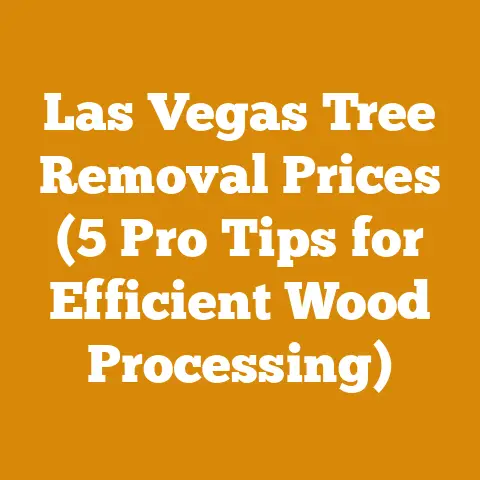Wood Stove Thermal Mass (Boost Heat Retention Tips)
Wood Stove Thermal Mass: Boost Heat Retention Tips
Let’s face it, a wood stove is more than just a heat source; it’s a cozy heart of the home, especially when winter winds howl. But maximizing its efficiency? That’s where the magic lies. We’re talking about thermal mass – the secret weapon to keep your home warmer, longer, and with less wood. Think of it as building a “heat battery” around your stove.
Understanding Thermal Mass and Wood Stoves
Thermal mass, at its core, is the ability of a material to absorb, store, and release heat. Materials with high thermal mass, like stone, brick, and concrete, can soak up a lot of heat without drastically changing temperature. This stored heat is then slowly released back into the surrounding environment, providing a sustained and even warmth.
-
How it Works with Wood Stoves: A wood stove generates intense, radiant heat. Without thermal mass, much of this heat can quickly escape up the chimney or create uncomfortable temperature swings in your home. By strategically placing materials with high thermal mass around your stove, you can capture this heat and release it over a longer period. This means fewer trips to the woodpile and a more consistent temperature in your living space.
-
Benefits:
- Increased Heat Retention: The primary benefit is, of course, longer-lasting heat. You’ll find your stove stays warm for hours after the fire dies down.
- Reduced Temperature Swings: Say goodbye to the “too hot, then too cold” cycle. Thermal mass helps even out temperature fluctuations, creating a more comfortable environment.
- Improved Efficiency: By capturing and utilizing more of the heat produced by your wood stove, you’ll burn less wood overall.
- Enhanced Comfort: Radiant heat from thermal mass is often perceived as more comfortable than the dry, forced air produced by some heating systems.
Choosing the Right Materials: A Cost-Conscious Approach
Selecting the right materials is crucial, not only for performance but also for your budget. Here’s a breakdown of common options and their associated costs:
Stone
- Types: Soapstone, granite, slate, and river rock are all excellent choices.
- Pros: Excellent thermal mass, aesthetically pleasing, durable.
- Cons: Can be expensive, heavy to work with, requires proper installation.
- Cost:
- Soapstone: Expect to pay anywhere from $30 to $70 per square foot, depending on the thickness and quality. Soapstone is the gold standard for thermal mass due to its exceptional heat retention properties.
- Granite: Costs range from $25 to $50 per square foot. Granite offers good thermal mass and a wide range of color options.
- Slate: Typically costs $20 to $40 per square foot. Slate is a beautiful and relatively affordable option.
- River Rock: Collected river rock can be free, but you’ll need to factor in the cost of mortar and potentially professional installation. Purchasing river rock from a supplier will cost around $100 – $300 per ton.
My Experience: I once built a small soapstone surround for a wood stove using reclaimed slabs. While the material itself was free, the labor involved in cutting and shaping the stone was significant. I spent about 40 hours on the project and had to purchase specialized diamond blades for my saw, adding another $150 to the cost.
Brick
- Types: Firebrick, common brick, reclaimed brick.
- Pros: Good thermal mass, relatively affordable, readily available.
- Cons: Less heat retention than stone, can be porous.
- Cost:
- Firebrick: Essential for lining the firebox of your stove. Expect to pay $2 to $5 per brick.
- Common Brick: Ranges from $0.50 to $2 per brick, depending on the type and supplier.
- Reclaimed Brick: Can be a cost-effective option, especially if you can source it locally. Prices vary widely, but you might find it for $0.25 to $1 per brick.
Cost Saving Tip: Check local demolition sites or online marketplaces for reclaimed brick. You can often find it at a fraction of the cost of new brick.
Concrete
- Types: Concrete blocks, poured concrete, concrete pavers.
- Pros: High thermal mass, relatively inexpensive, versatile.
- Cons: Can be less aesthetically pleasing than stone or brick, requires proper reinforcement.
- Cost:
- Concrete Blocks: Around $1 to $3 per block.
- Poured Concrete: Costs vary depending on the size and complexity of the project. Expect to pay $5 to $10 per square foot for a basic concrete slab.
- Concrete Pavers: Range from $2 to $5 per paver.
Safety Note: When working with concrete, always wear appropriate safety gear, including gloves, eye protection, and a dust mask.
Water
- Types: Water tanks, barrels, or even sealed containers.
- Pros: Extremely high thermal mass, efficient heat storage.
- Cons: Requires careful planning and construction to prevent leaks, can be heavy and bulky.
- Cost:
- Water Tanks: Prices vary depending on the size and material. A 55-gallon plastic drum can cost around $50 to $100.
- Barrels: Similar to water tanks in cost.
- Construction: The total cost will depend on the design and materials used for the enclosure.
Important Considerations:
- Proximity to the Stove: Ensure the materials are placed close enough to the stove to absorb heat effectively but not so close that they pose a fire hazard.
- Building Codes: Check your local building codes and regulations before starting any construction project.
- Structural Integrity: Ensure the floor can support the weight of the added thermal mass.
- Material Compatibility: Use materials that are compatible with high temperatures and won’t release harmful fumes when heated.
Designing Your Thermal Mass Project: Practical Ideas and Cost Estimates
Now that we’ve covered the materials, let’s explore some practical design ideas and their associated costs.
The Classic Brick or Stone Surround
- Description: Building a wall or surround around your wood stove using brick or stone.
- Pros: Effective heat retention, aesthetically pleasing, relatively easy to construct.
- Cons: Can take up significant space, requires proper foundation.
-
Cost Estimate:
- Materials: Brick ($0.50 – $2 per brick) or stone ($20 – $70 per square foot).
- Mortar: $10 – $20 per bag.
- Foundation (if needed): $5 – $10 per square foot.
- Labor (if hiring a professional): $50 – $100 per hour.
Example: A 4ft x 6ft brick surround, 4 inches thick, would require approximately 384 bricks. At an average cost of $1 per brick, the material cost would be $384. Adding mortar ($20) and potentially a simple concrete foundation ($120), the total cost could range from $524 to $700, depending on the location and material availability.
The Water Barrel Heat Bank
- Description: Encasing water-filled barrels or tanks behind or beside your wood stove.
- Pros: Excellent heat storage, relatively inexpensive.
- Cons: Can be bulky, requires careful construction to prevent leaks, potential for corrosion.
-
Cost Estimate:
- Barrels/Tanks: $50 – $100 per barrel.
- Enclosure Materials (wood, metal, etc.): $100 – $300.
- Plumbing (if connecting to a hot water system): $100 – $500.
My Experience: I helped a friend build a water barrel heat bank behind his wood stove. We used four 55-gallon plastic drums and built a simple wooden frame around them. The total cost was around $400, but the difference in heat retention was remarkable. His stove now heats the house for several hours after the fire goes out.
The Concrete Block Bench
- Description: Building a bench or seating area near your wood stove using concrete blocks.
- Pros: Comfortable seating, good heat retention, relatively inexpensive.
- Cons: Can be less aesthetically pleasing than other options, requires proper reinforcement.
-
Cost Estimate:
- Concrete Blocks: $1 – $3 per block.
- Mortar: $10 – $20 per bag.
- Seating Surface (wood, tile, etc.): $50 – $200.
Cost Saving Tip: Use reclaimed wood or inexpensive tiles for the seating surface to reduce costs.
DIY vs. Hiring a Professional: Making the Right Choice
Deciding whether to tackle your thermal mass project yourself or hire a professional depends on your skills, budget, and time constraints.
-
DIY:
- Pros: Cost-effective, sense of accomplishment, control over the project.
- Cons: Time-consuming, requires specialized skills, potential for mistakes.
-
Hiring a Professional:
- Pros: Ensures quality workmanship, saves time, reduces the risk of errors.
- Cons: More expensive, less control over the project, requires careful selection of a qualified contractor.
My Recommendation: If you have experience with masonry or carpentry, a simple brick surround or concrete block bench can be a rewarding DIY project. However, for more complex projects like a water barrel heat bank or a large stone surround, hiring a professional is often the best option.
Factors to Consider When Hiring a Professional:
- Experience: Choose a contractor with experience in wood stove installations and thermal mass projects.
- References: Ask for references and check their previous work.
- Licensing and Insurance: Ensure the contractor is licensed and insured.
- Written Contract: Get a detailed written contract that outlines the scope of work, materials, and payment schedule.
Cost Optimization Strategies: Saving Money Without Sacrificing Performance
Here are some practical tips to help you save money on your thermal mass project:
- Source Materials Locally: Look for local suppliers of brick, stone, and concrete. You can often find better deals than at big box stores.
- Consider Reclaimed Materials: Reclaimed brick, stone, and wood can be a cost-effective and environmentally friendly option.
- Do Some of the Work Yourself: Even if you hire a professional for the main construction, you can save money by doing some of the prep work yourself, such as demolition or site cleanup.
- Shop Around for Quotes: Get multiple quotes from different contractors before making a decision.
- Plan Carefully: A well-planned project is less likely to encounter unexpected costs.
The Importance of Proper Installation and Maintenance
Proper installation and maintenance are crucial for the safety and effectiveness of your thermal mass system.
- Clearances: Maintain proper clearances between the wood stove and combustible materials. Consult your stove’s manual and local building codes for specific requirements.
- Chimney Inspection: Have your chimney inspected and cleaned regularly to prevent creosote buildup.
- Material Inspection: Regularly inspect the thermal mass materials for cracks or damage. Repair any damage promptly to prevent further deterioration.
- Ventilation: Ensure adequate ventilation in the room where the wood stove is located.
Financial Considerations: Budgeting and Return on Investment
Let’s talk numbers. Investing in thermal mass for your wood stove can be a significant upfront cost, but it can also provide a significant return on investment in the long run.
- Reduced Wood Consumption: By increasing the efficiency of your wood stove, you’ll burn less wood, saving you money on fuel costs.
- Increased Home Value: A well-designed and properly installed thermal mass system can increase the value of your home.
- Energy Independence: By relying less on fossil fuels, you’ll be more energy independent and less vulnerable to price fluctuations.
Example: Let’s say you currently burn 5 cords of wood per year at a cost of $250 per cord. A thermal mass system could potentially reduce your wood consumption by 20%, saving you 1 cord of wood per year, or $250. Over 10 years, that’s a savings of $2,500.
Budgeting Tips:
- Create a Detailed Budget: List all the materials, labor, and permits required for the project.
- Get Multiple Quotes: Compare prices from different suppliers and contractors.
- Set Aside a Contingency Fund: Unexpected costs can arise during any construction project, so it’s wise to set aside a contingency fund to cover them.
- Consider Financing Options: If you don’t have the cash on hand, you may be able to finance the project through a home equity loan or a personal loan.
Case Studies: Real-World Examples of Thermal Mass Success
Let’s look at some real-world examples of how thermal mass has been successfully implemented in wood stove installations.
- Case Study 1: The Soapstone Fireplace: A homeowner in Vermont installed a soapstone fireplace surround for his wood stove. The soapstone absorbs heat quickly and releases it slowly, providing a comfortable and consistent heat throughout the day and night. He reported a 30% reduction in wood consumption and a significant improvement in the comfort of his home.
- Case Study 2: The Water Barrel Heat Bank: A family in Oregon built a water barrel heat bank behind their wood stove. The water-filled barrels store heat during the day and release it at night, reducing the need to burn wood overnight. They reported a 25% reduction in wood consumption and a more even temperature in their home.
- Case Study 3: The Concrete Block Bench: A couple in Maine built a concrete block bench near their wood stove. The bench provides comfortable seating and also absorbs heat from the stove, creating a warm and inviting space. They reported a noticeable improvement in the overall comfort of their living room.
Actionable Takeaways and Next Steps
So, you’re ready to boost your wood stove’s heat retention with thermal mass? Here’s a quick recap of the key takeaways and some actionable next steps:
- Understand the Basics: Thermal mass is the ability of a material to absorb, store, and release heat.
- Choose the Right Materials: Stone, brick, concrete, and water are all excellent choices for thermal mass.
- Design Your Project Carefully: Consider the size, location, and aesthetics of your thermal mass system.
- DIY or Hire a Professional: Assess your skills and budget to determine whether to tackle the project yourself or hire a professional.
- Optimize Costs: Source materials locally, consider reclaimed materials, and do some of the work yourself to save money.
- Ensure Proper Installation and Maintenance: Follow all safety guidelines and inspect your system regularly.
- Budget Wisely: Create a detailed budget and set aside a contingency fund.
Next Steps:
- Assess Your Needs: Determine your budget, skill level, and desired outcome.
- Research Options: Explore different materials, designs, and contractors.
- Create a Plan: Develop a detailed plan that outlines the scope of work, materials, and timeline.
- Gather Quotes: Get multiple quotes from different suppliers and contractors.
- Start Building: Once you have a plan and a budget, it’s time to start building your thermal mass system!
Conclusion: A Warm and Efficient Future
Investing in thermal mass for your wood stove is an investment in comfort, efficiency, and sustainability. By capturing and utilizing more of the heat produced by your stove, you’ll burn less wood, save money, and create a warmer, more inviting home. So, roll up your sleeves, grab your tools, and get ready to transform your wood stove into a thermal powerhouse. You’ll be amazed at the difference it makes.






